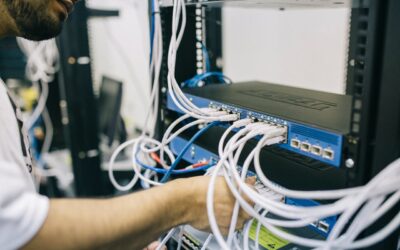
What An Equipment Tracking Register Is
- Make and model number
- Seller
- Purchase cost
- Date of purchase
- Serial number
- Warranty and insurance information
- Estimated current value
- Expected life span
- Maintenance schedule
- And any other details that you wish to add
In addition to adding all of the above details, you can update your register as and when you please. If you purchase a new asset you can add it to the register. If an asset has been discarded, you can remove it from the equipment tracking register. Keeping everything up to date can be helpful if you need to access details about each asset in the future.

Verifying Your Records
Imagine being able to export and print off reports about all of your assets. This is something that you could do if you use a register that details all of your assets. Just make sure that the software you choose offers you this feature.
The Accounting Process
The accounting process also involves ensuring that figures such as asset costs, depreciation, and tax are correct. While this may not seem like a lot of fun, having an equipment register to hand can make the process much easier.
Asset Depreciation
There are a few different methods for calculating depreciation. For example, you could use the units of production way, the written down value, or even the straight line method. The choice is yours. However, once you have calculated everything, you’ll need to update your register. Finally, don’t forget to update your insurance and tax values. This could help you to save money and that’s never a bad thing.
The Valuation
The final step of the auditing process relates to the valuation of your assets. This valuation needs to include every single piece of equipment that you own. You may have a lot of equipment and it could seem like a task but it’s vital everything’s included. As soon as you have confirmed the value of everything you’ll need to do one more thing. You’ll need to check that your business is meeting the regulatory requirements. This is often an anxiety-provoking task. However, if you take your time you can potentially iron out any issues. Don’t rush any part of this process. Take as long as you need to ensure that your business is meeting those regulations. When you are certain, then you can disclose everything.
Using an equipment tracking register can prove to be very useful for the auditing process. You could have all of the information you need about your assets in one place. You may not have to go running around a warehouse or factory, for example, trying to gain the information you need. You can simply log into your tracking software and have access to the details you need for your audit. Consequently, this potentially stressful time could be made so much easier.
Would you like to speak with someone knowledgeable about using an equipment tracking register to help you with audits? Contact us now at team@itemit.com.

Try itemit
Choose a better way to track your assets. Start your free 14-day trial now!

Keep Learning
itemit Blog
Tips, guides, industry best practices, and news.
What Is Visual Inspection? Definition, Methods, and Best Practices in Manufacturing
Learn the meaning of visual inspection, its methods, tools, and applications in manufacturing. Discover best practices for accurate quality control.
5 Tips For Better Equipment Management
Equipment management is vital to ensuring your business’s smooth operations. Discover how to get the most out of your hard-earned investments.
What is equipment booking software and do I need it?
What is equipment booking software? Should you use it if you’re hiring out or sharing equipment? How can itemit help you book equipment?




